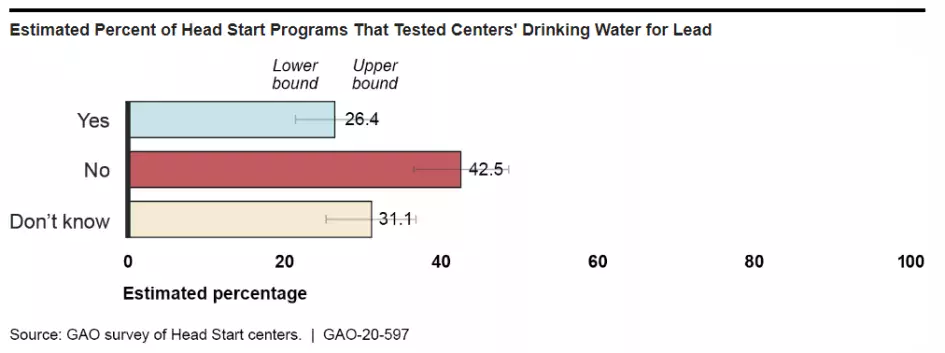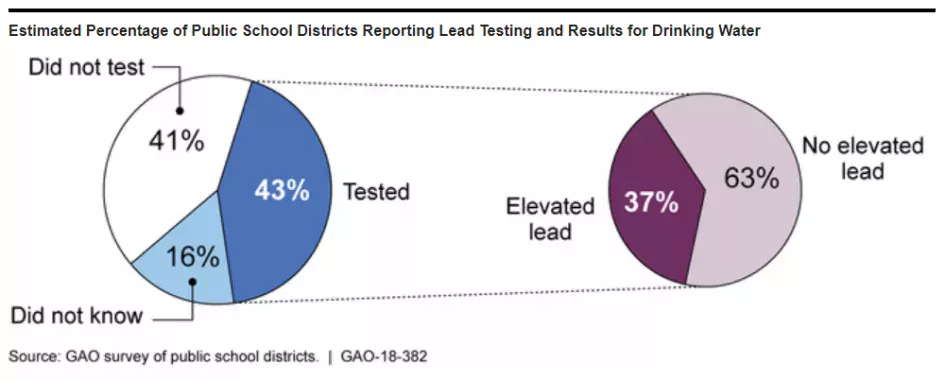Protecting Children from Lead Exposure in Schools and Child Care Facilities
Exposure to lead—like that found in contaminated water—can result in significant health problems. Children are particularly at risk because their growing bodies absorb more lead than adults. Negative health effects include anemia, kidney and brain damage, as well as learning disabilities and decreased growth.
In recognition of Lead Poisoning Awareness Week, today’s WatchBlog looks at our work on lead contamination in facilities where children spend a lot of time—such as child care centers and public schools.
You can also tune into our recent podcast about lead in child care centers to learn more.
Lead in child care facility drinking water
Many young children spend significant time in child care settings. According to the Environmental Protection Agency (EPA), child care facilities, among other types of buildings, may have a higher potential for elevated lead levels in their drinking water because they are closed over weekends, holidays, and extended breaks during which lead in pipes and other fixtures can leach into the water. The prolonged shutdowns due to the COVID-19 pandemic raise similar concerns.
We surveyed Head Start programs for our report that we issued last month. Head Start—one of the federal government’s largest early care and education programs and services—served approximately 900,000 infants and preschool children from low-income homes in 2019. We found that an estimated 43% of Head Start centers had not tested for lead in their drinking water from late-2018 through the end of 2019. And 31% of the centers did not know if they had tested at all.
Image

In our report, we recommended that Head Start grantees be required to document that water provided to children has been tested for lead and that the EPA and the Department of Health and Human Services, which oversees Head Start, collaborate to promote testing.
Lead in public schools drinking water
Children attending K-12 public schools may also be at risk of lead exposure from drinking water. Lead in school drinking water is a concern because it is a daily source of water for more than 50 million children enrolled in public schools. Similar to child care centers, the pattern of schools’ schedules—including time off during weekends, holidays, and extended breaks—can contribute to standing water in the schools’ plumbing systems, possibly allowing lead to leach into the water.
In our 2018 report, we found that an estimated 41% of school districts—serving 12 million students—had not tested school water for lead in 2016 or 2017. Similarly, another 16% of school districts didn’t know whether they had tested for lead at all. Of the school districts that did test for lead (43% of those we surveyed—representing some 35 million students), about 37% found elevated lead levels in their water. The figure below shows the estimated percent of school districts testing and those that found elevated lead levels.
Image

There are no federal laws requiring lead testing of drinking water in schools that receive water from public water systems, even though these systems are regulated by the EPA. According to the EPA, at least 8 states had requirements for schools to test for lead in water, and an additional 13 states supported school districts’ voluntary efforts with funding or in-kind support for tests and remediation.
As a result of our 2018 report, the EPA has taken a variety of actions, such as communicating the importance of testing for lead in school drinking water and collaborating with the Department of Education. In 2019 and 2020, EPA awarded grants authorized by the Water Infrastructure Improvements for the Nation Act to states and the District of Columbia to help with voluntary testing in schools and child care facilities.
Check out our Key Issues page on Children’s Health and Safety to find out more about our work in these areas.
- Comments on GAO’s WatchBlog? Contact blog@gao.gov.
GAO Contacts
Related Products

GAO's mission is to provide Congress with fact-based, nonpartisan information that can help improve federal government performance and ensure accountability for the benefit of the American people. GAO launched its WatchBlog in January, 2014, as part of its continuing effort to reach its audiences—Congress and the American people—where they are currently looking for information.
The blog format allows GAO to provide a little more context about its work than it can offer on its other social media platforms. Posts will tie GAO work to current events and the news; show how GAO’s work is affecting agencies or legislation; highlight reports, testimonies, and issue areas where GAO does work; and provide information about GAO itself, among other things.
Please send any feedback on GAO's WatchBlog to blog@gao.gov.




